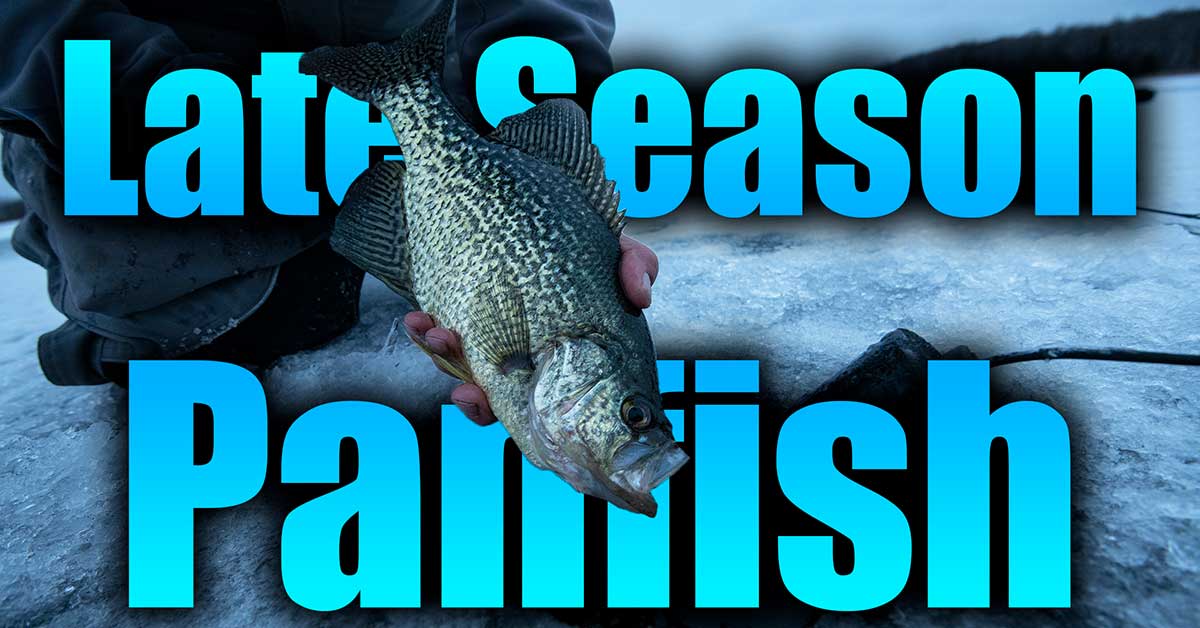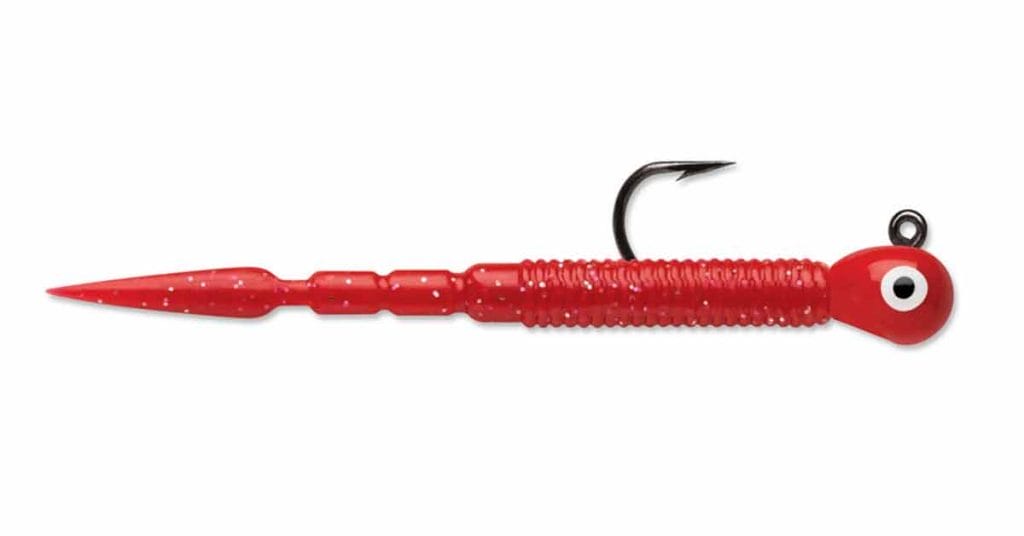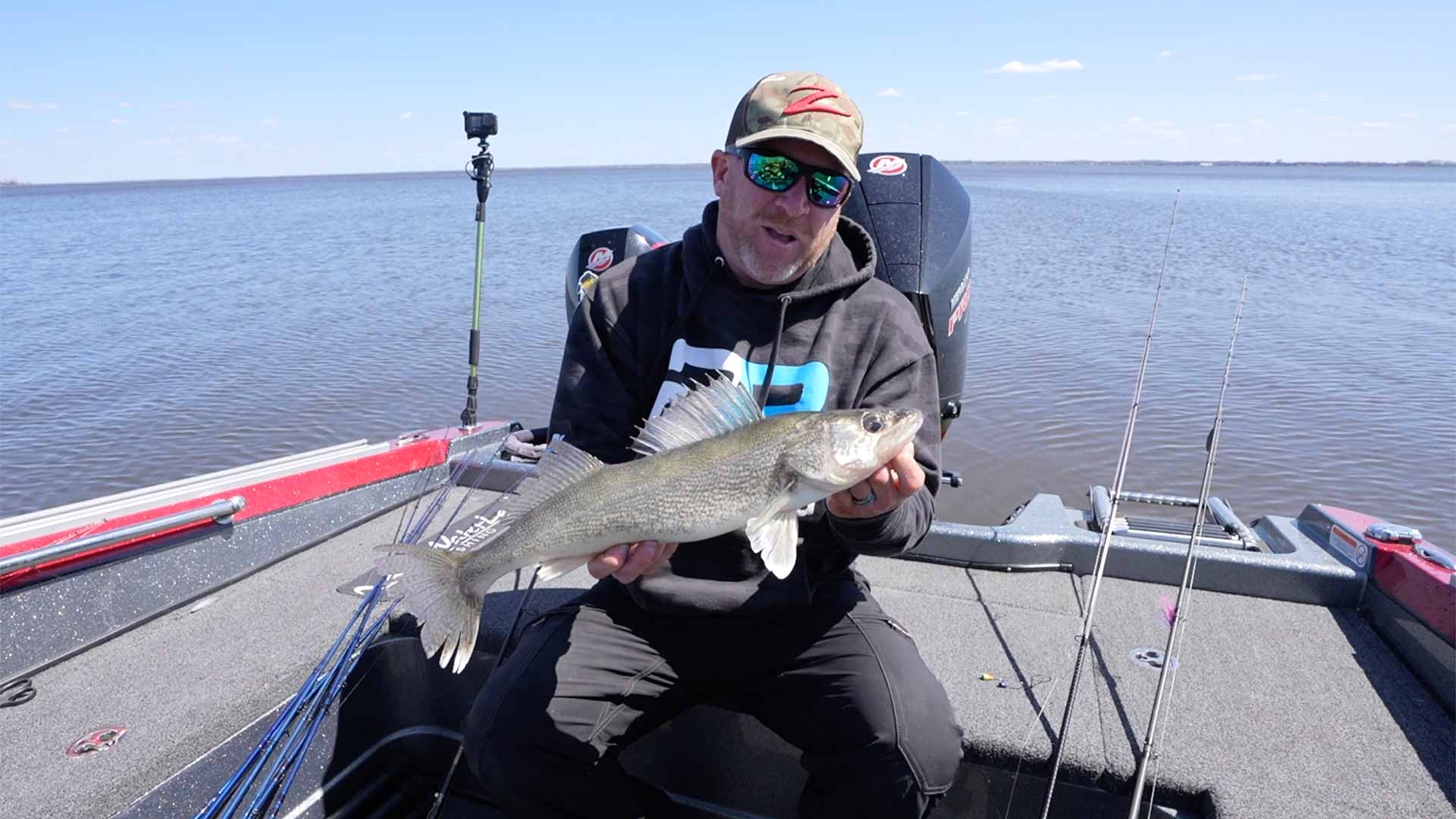The last few weeks of the ice season can offer one of the best bites you can get on all winter! Late ice panfish should be on your radar during March!
Late Ice Panfish
The end of February heralds the closure of ice fishing seasons for gamefish on the inland waters of several northern states. In others, fishing seasons remain open year-‘round—with most of that time frame being ice-free. Running farther north to Canadian waters may be an option for hardcore folks who can’t stand seeing ice and ice fishing go away for another year.
Where state law precludes you from poking a walleye, pike or bass through the fading vestiges of late-season ice, the good news is that seasons for panfish like bluegills, crappies and perch remain open. So you can still get your licks in, even though the size of your quarry is downsized.
What you sacrifice in average fish stature may be made up in numbers and action, because chances are that once you find schools of panfish, bunches of them will be eager biters. The late ice panfish bite can simply be incredible.
Locating Late Ice Panfish
The key to late ice panfishing is following the fish through their seasonal transition from deep, midwinter basin zones, to staging areas outside their eventual spawning sites.
Coincidentally, these staging areas are also late-winter feeding zones.

Beneath the thinning ice, Mother Nature sends signals to all of her aquatic children that winter is drawing to an end, and that it’s time to begin aggressively feeding prior to spawning.
Panfish respond by prowling and digging larvae out of the mud, chasing down minnows, probing weedbeds for insect life, and generally shifting into a higher gear, eating-wise.
The places they do this inevitably lie somewhere along a line between their wintering areas and spawning sites. So if you know where they were, and where they’re likely headed, fish along that course, progressively searching and fishing closer to their spawning grounds as winter fades.
Shallow weed flats, particularly those outside the mouths of bays, are great late ice panfish spots for particularly ‘gills and crappies. Shortly after ice-out, fish will enter those bays in search of warm water and food; awhile later, they will likely spawn somewhere within the general area.
So you know their neighborhood. Now, you just have to knock on enough doors to see where they’re living—at least for the time being. The outside fringe of the deepest weeds, and the mud basin immediately adjacent to the dropoff, are great places to start.
Baits for Late Ice Panfish
With the focus increasingly shifting shallower, tiny jigheads tipped with waxworms or realistic soft plastic baits really shine at this time.
Drill lots of holes in likely places, and don’t be shy about dropping an underwater camera to see who or what might be living nearby, and how well they’re responding to your lures and imparted actions.
If they’re smaller-mouthed bluegills, keep your baits on the tiny side. If they’re perch or crappies, you can usually upsize a little, perhaps even substituting a minnow head tipped on a small spoon for the subtler jig.
Yet if fish are fussy, switch to a dropper rig—a short segment of line (check state regulations) extending from your spoon to a tiny ice jig dressed with a waxie.
This gives you the weight of a larger lure to get you down and attract attention, combined with a smaller morsel to tempt bites when the jigging action is paused.
Late-ice is the beginning of the end of ice fishing. It also may provide you with an awesome late ice panfish bite!












